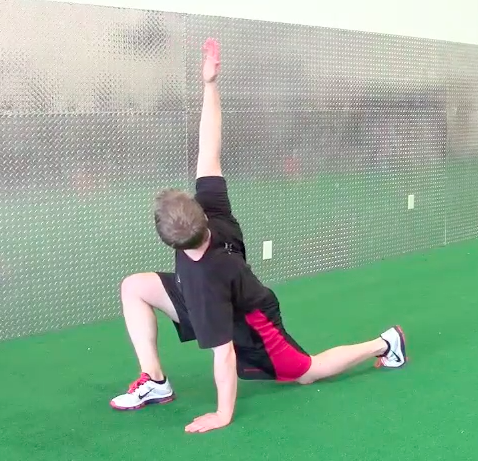As athletes get deeper into their seasons, being diligent about recovery becomes increasingly important. In general, athletes tend to focus on positive habits when it’s too late. For example, some may wait until they’re already sick before they start getting enough sleep every night and drinking water, or wait until they’ve strained a muscle before they start doing their mobility and corrective work. While it’s never bad to adopt good habits (late is always better than never), the reality is that a little everyday is better than a lot all at once. Over the last week I’ve added a couple articles that discuss different recovery considerations and strategies. If you missed those, you can check them out at the links below:
While this has a little less to do with recovery and overtraining, I also thought I’d remind you about the recipe I posted the other week. Give it a shot: Seasonal Post-Workout Snack
Hip and Thoracic Mobility
Over the last several years, I’ve talked a lot about the importance of maintaining, and in most cases improving, hip and thoracic mobility in all athletes, but especially hockey players. I have a lot of different mobility exercises that we use for these purposes. Having a variety is helpful both in terms of addressing slightly different planes of movement and in keeping the players interest. For the players that buy in and do some of this work almost every day of the week, doing the same exercises over and over can get pretty stale.
For the Flyers Junior Team I’m working with, we’re basically rotating 5 mobility drills every 4 weeks, which we perform after rolling, but before the dynamic warm-up. This week we started a new series that included one of my favorite integrated hip and thoracic mobilizations, a “Static Spiderman Lunge w/ Rotation”.
Static Spiderman Lunge w/ Rotation
A few coaching points to keep in mind:

Rotating the neck to “look through the hand” helps to unlock more thoracic rotation.
If performed correctly, you’ll probably feel a stretch to your posterior adductor magnus on the front side (think back side of the high groin), the hip flexor on the back side, and your chest/shoulder on the top arm. That said, everyone is built differently and will experience this position differently. From a coaching perspective, I tend to just look for optimal alignment and if the athlete has that, they’ll “feel it” wherever they’re supposed to. Athletes with limited hip flexion or thoracic rotation will really struggle with and benefit from this. If there is a structural limitation to hip flexion (e.g. FAI), then you can put a 12-18″ box or bench under the athletes hand which will help keep them up a little higher.
This is a great exercise to address hip and thoracic mobility together. Give it a try and post your comments below! If you want to get access to over 800 other exercise videos, including over 70 mobility/warm-up exercises, check out the Ultimate Hockey Training Insider’s Section today!
To your success,
Kevin Neeld
OptimizingMovement.com
UltimateHockeyTraining.com
P.S. The first step toward driving physical adaptation is making sure you’re following a quality training program. If you don’t have a written training program that tells you EXACTLY what to do, then check out Ultimate Hockey Training‘s Insider Section!
Please enter your first name and email below to sign up for my FREE Athletic Development and Hockey Training Newsletter!